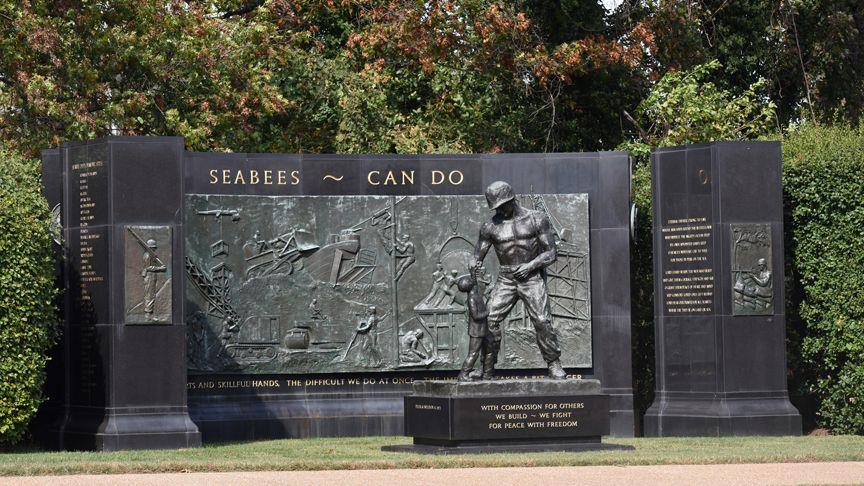The United States Naval Construction Battalions, better known as the Navy Seabees, form the U.S. Naval Construction Force. The Naval Construction Battalions were conceived of as replacements for the civilian construction companies in combat zones after the attack on Pearl Harbor. At that time civilian contractors had roughly 70,000 men working U.S.N. contracts overseas. Convinced that war was coming, the U.S. Navy realized that fighting theaters halfway around the world require a vast infrastructure. Beginning in 1940, they began a program of building bases on far-flung Pacific islands using civilian contractors. When the United States officially entered the war, the use of civilian labor had to stop. Under International law made it illegal for civilian workers to resist an attack. Doing so would classify them as guerrillas and could lead to summary execution.
On December 28, 1941, Rear Admiral Ben Moreell, Chief of the Bureau of Yards and Docks, requested specific authority to activate, organize, and man a unique, very special organization that would support the Navy and Marines in remote locations and defend themselves if attacked –The Naval Construction Battalions. On January 5, 1942, he was given that authority and the original battalions were formed at a new Naval base in Davisville, Rhode Island, less than two weeks later, on January 17, 1942. It was designated the First Construction Detachment. The 296 men arrived at Bora Bora on February 17, 1942.
On March 5, all Construction Battalion personnel were officially named Seabees by the Navy Department. Admiral Moreell personally furnished them with their motto Construmus Batumius, or We Build, We Fight. A logo the fighting B created.
 |
| File Photo |
On June 25, 1950, North Korea attacked South Korea. This civil war was greatly expanded when the United States, and later China, entered the conflict. In Korea, as in World War II, the “Can Do” spirit shone again. The Seabees were reestablished on August 8, 1951. Landing at Inchon they provided pontoon causeways within hours of the initial assault. The Seabees served side by side with the Marine Corps and the Army, building and defending what they built.
Beginning in 1955, Seabees began deploying yearly to the continent of Antarctica. As participants in Operation “Deep Freeze,” their mission was to build and expand scientific bases located on the frozen continent. The first “wintering over” party included 200 Seabees who distinguished themselves by constructing a 6,000 foot ice runway on McMurdo Sound. Despite a blizzard that once destroyed the entire project, the airstrip was completed in time for the advance party of De Freeze II to become the first to arrive at the South Pole by plane.
In the Vietnam War the Seabees numbered 10,000 men. In May of 1965 they went across the beach at Chu Lai, Republic of Vietnam. During the peak of the Vietnam conflict, Seabee strength reached 25,000 men in 22 battalions, two regiments, two maintenance units and scores of Civic Action Teams.
